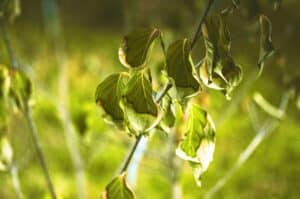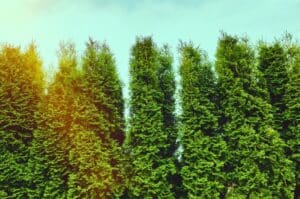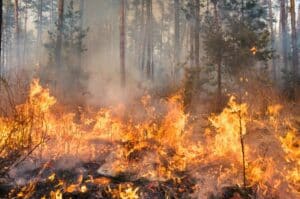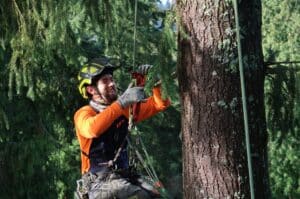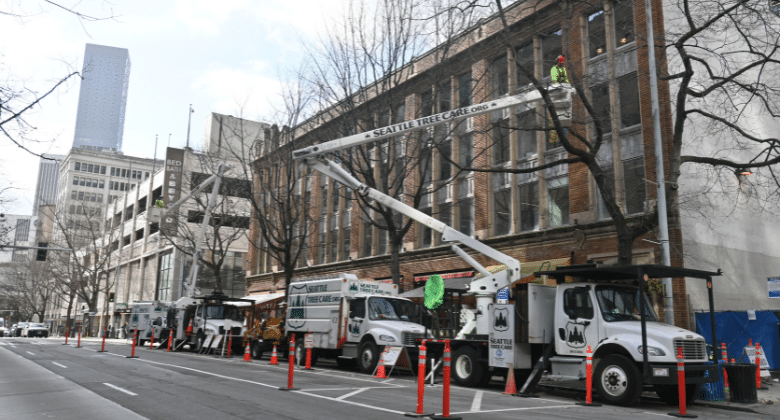When to Remove a Tree: 6 Signs It’s Time – And What Seattle Arborists Might Recommend First
Trees don’t always show clear warning signs. Here’s how to tell if yours in the Greater Seattle Area needs to be removed — or if it can still be saved.
Deciding whether to remove a tree can feel a lot like having “Should I Stay or Should I Go” playing on repeat in your head. It’s rarely a black-and-white decision – especially when the tree isn’t looking great, but it’s not clearly dead either.
Some trees live for generations, while others reach a tipping point where removal is the safest option. We’ll walk you through six signs that a tree may need to come down – and what options you might have before making that final call.
Key Takeaways
- Not every struggling tree needs to be removed — a Certified Arborist can help you explore options before making that decision.
- Severe storm damage, root problems, or disease are all warning signs that a tree may be unsafe and need removal.
- Mushrooms or fungi growing on or near a tree can signal internal decay and should be evaluated by a professional.
- Trees that lean significantly or have lost over 50% of their canopy are often at higher risk of failure.
- Before you remove a tree in Seattle, it’s important to check local permit requirements and consult an expert for guidance.
6 Signs You May Need to Remove a Tree in the Greater Seattle Area
Removing a tree isn’t an easy decision – especially if it’s been part of your yard for years. But when a tree becomes unsafe, unstable, or beyond recovery, taking it down is sometimes the smartest move for your property’s safety and long-term health.
Before you decide, here are some warning signs to watch for:
PRO TIP: Seeing one or more of these signs doesn’t automatically mean your tree has to go. In many cases, there are ways to reduce risk or restore health without full removal. A Certified Arborist can help you understand your options and make the right call.
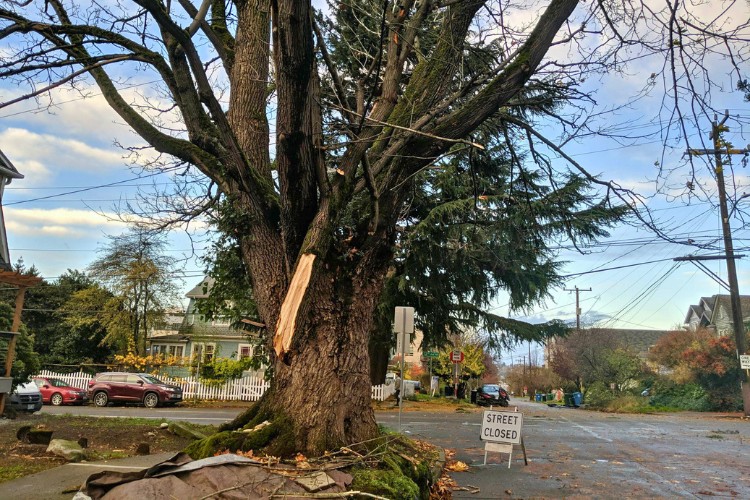
1. A Storm Has Severely Damaged or Killed the Tree
Seattle is known for its gray skies and frequent rain – and while that’s great for greenery, too much water can create serious problems for your trees. Excess rainfall can saturate the soil, weaken the roots, and eventually lead to root rot. When that happens, even healthy-looking trees can fall without warning.
Storms can also bring strong winds that snap large branches or break off entire sections of the tree. If more than half of the canopy is lost, most trees won’t survive, making removal the safest option.
Getting ahead of the problem and having a consulting arborist come out and complete a tree risk assessment can ease your worries.
2. The Tree is Taking Up Too Much Space Above or Below Ground
When you plant a sapling, it can be difficult to picture just how big it will grow at its mature height. Even if you research the full size of a tree before you plant it, you may still underestimate how much space it can take up, both above and below ground.
Large trees can crowd out your other trees and plants and prevent them from getting adequate sunlight. They can also encroach on structures or power lines. Underground, the roots may wreak havoc on your plants in a garden or exploit weaknesses in pipes and cause water damage. In the worst scenarios, a tree too close to your house could have its roots cause damage to the foundation.
While it may be a tough decision, there is nothing wrong with removing a tree that is taking up too much space and putting the rest of your property at risk.
3. You Notice Fungi Growing on Your Tree
Mushrooms growing on or around a tree are often seen as a red flag – and sometimes, they are. Certain types of fungi can indicate internal decay or root rot, which may compromise the tree’s stability. But not all fungi are harmful; some actually play a beneficial role in the tree’s ecosystem.
The challenge is knowing the difference.
Because it’s hard to tell at a glance whether the fungi are harmless or a sign of deeper trouble, their presence should always prompt a closer look. A Certified Arborist can assess the tree, check for internal decay, and determine whether it poses a safety risk. In some cases, they may recommend removal to prevent future damage.
4. Your Tree Looks Sick and at Risk of Failure
Trees face threats from numerous diseases and insects that can kill them and cause them to become a danger to your property. Some of the typical symptoms to look for include:
- Discolored, spotted, or damaged leaves
- Dead or damaged branches
- Cracks in the trunk or visible fungal damage
- Newly exposed roots
If you notice signs of insect and disease damage, contact an arborist and have them inspect your tree and recommend what to do. They may suggest removal or treatments to try to save the tree and allow it to keep standing.
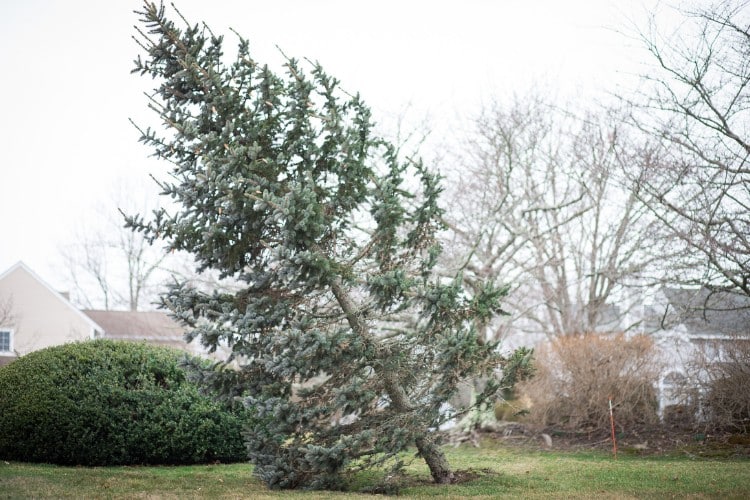
5. Your Tree Has Developed a Lean
Trees can start to lean due to damage to the roots or improper planting. When a tree leans more than 15 degrees from vertical, it may be time to consider removal. A leaning tree is more likely to fail during a storm, as the wind can more easily blow it over than one standing straight up.
6. The Tree is Dead
Of course, if a tree is dead, we recommend removing it if it poses any risk to nearby targets. Dead trees do not have the same structural integrity as live ones. Removing them is a simple way to enhance safety on your property.
If your tree is in an open area without any targets, you can consider leaving it up for a while. Birds and small mammals will use it for nests and shelter, and it’s a simple thing you can do to benefit the Greater Seattle Area ecosystem.
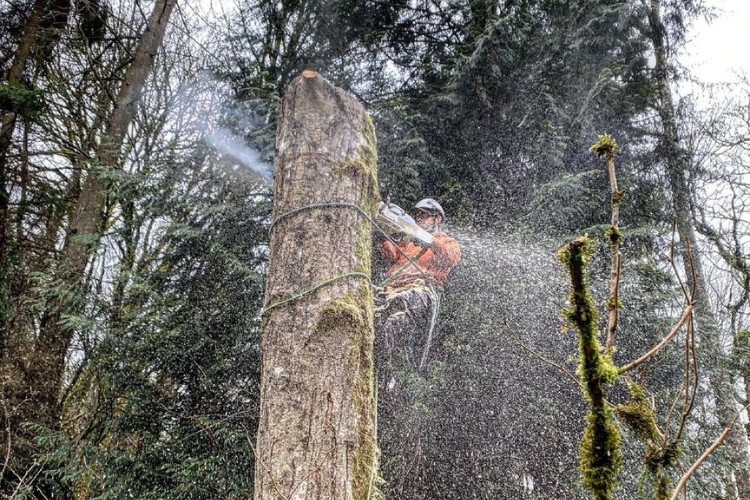
Don’t Jump to Conclusions – Get Expert Advice from a Certified Arborist
Not every tree displaying warning signs needs to be taken down. A Certified Arborist can evaluate whether your tree is truly hazardous or if it’s still safe – and worth saving with the right care.
“One of the biggest mistakes many homeowners make is that they’ll see something wrong with their trees and immediately jump to the idea of removing the tree. And while sometimes there will be symptoms that indicate a tree is too at-risk to keep standing, in other instances, there’s something we can do to help save it.” – Adam, Arborist Crew Lead at Seattle Tree Care
The first step is to schedule an arborist inspection. This will give you a better understanding of the tree’s condition and what options may be available.
What steps might an arborist recommend instead of cutting down my tree?
Depending on what the inspection reveals, an arborist may recommend steps like:
- Pruning Damaged Branches: If a storm or other weather event damaged your tree, restoration pruning may be able to help it recover and regain its shape. Pruning also assists in preventing future storm damage.
- Installing Structural Support: Structural support, like cabling and bracing, can support a tree with weak or overly long sections prone to failure.
- Treating for Insects and Disease: With emerging threats like the emerald ash borer, it’s more important than ever to be proactive with preventive insect and disease treatments.
- Boosting Root Health with Fertilization: Fall and spring fertilization can improve your tree’s overall health. Have a professional handle the job to avoid over-fertilization.
Frequently Asked Questions About When to Remove a Tree in Seattle
Want to learn more about tree removal? We’ve answered some common questions homeowners have about it, so you can know more about why we remove trees.
Will I need a permit to remove a tree in the Greater Seattle Area?
Whether you need a permit to remove a tree in the Greater Seattle area will depend on where you live. However, residents inside Seattle will need to secure a tree removal permit, and these can be difficult to obtain in some instances. The city typically only approves a tree removal permit when the tree is hazardous and has to come down. In the case of an unwanted, generally healthy tree, you may not be able to remove it. Always check the permitting laws before taking a tree down.
How long does it take to remove a tree?
The time it takes to remove a tree can vary greatly depending on its condition, size, and location. Some jobs will only take a few hours, while others may take the better part of a day to do safely.
Is it more economical to save a tree or cut it down?
Tree removal can be costly, especially when working with a qualified company. Preserving a tree is typically less expensive and offers more long-term benefits. Of course, when a tree is unsafe, there is sometimes no alternative but to remove it.
Not Sure Whether or Not to Remove a Tree? Let Seattle Tree Care Help You Decide What’s Next
Whether your tree is showing signs of decline or you’re just not sure what to do, Seattle Tree Care is here to help you make the right call – not just the easy one. Our ISA Certified Arborists bring years of experience evaluating trees throughout the Greater Seattle Area and can help you understand whether your tree needs to be removed or still has a future in your yard.
We’ll walk you through the options, explain the risks, and handle the work safely and professionally. Call us today at 206-789-0534 or request a free quote online. Your trees – and your peace of mind – are in good hands.
SEE MORE ARTICLES FROM OUR b(LOG)
We've got you covered with tips, resources, updates, how-to's, and other helpful information about trees and landscapes in Seattle, Puget Sound, and King County, WA. Join the thousands of smart local residents who get the monthly newsletter from Seattle Tree Care for helpful information you won't want to miss!
There's no spam - we promise! We are committed to keeping your e-mail address confidential. We do not sell, rent, or lease our contact data or lists to third parties.




